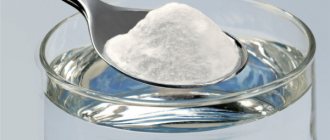Composition and release form
The composition of the drug depends on the form of release of the drug. Eufillin is produced in the following versions:
- Pills. One piece contains the active substance - aminophylline (150 milligrams), as well as auxiliary components. The latter include calcium, stearic acid and potato starch.
- Ampoules (solution for injection). Aminophylline is also the main substance. Each ampoule contains 24 milligrams of the active ingredient. In addition to it, the composition also contains water for injection.
Pharmacological effects
The main effect of the drug is antispasmodic. However, it also has other effects on the human body, namely tocolytic, diuretic and bronchodilator.
According to the Vidal classifier, Eufillin is included in the pharmacological group of phosphodiesterase inhibitors.
What does Eufillin help with? Indications for use
Indications for use of the drug Eufillin may vary slightly depending on the form of release. Tablets are most often prescribed for:
- Bronchial asthma of varying severity.
- Chronic obstructive pulmonary disease.
- Paroxysmal attacks of apnea at night.
- Right ventricular heart failure.
- Emphysema.
The injection form of the drug is used for:
- Cerebrovascular insufficiency of the brain (the drug is used in combination with other drugs and helps reduce intracranial pressure).
- Pulmonary hypertension.
- Left ventricular heart failure (also used in combination with a number of other drugs).
- For diseases of the respiratory system accompanied by spasm and broncho-obstructive syndrome (COPD, emphysema, bronchial asthma).
Eufillin solution for intravenous administration 24 mg/ml in ampoules 5 ml No. 10
Name
Eufillin solution din. 24 mgml per pack. 5 ml per pack No. 10
Release form
Solution
Description
clear, colorless or slightly yellowish liquid.
Compound
One ampoule (5 ml) contains - active ingredient: aminophylline for injection - 120 mg; excipient: water for injection.
INDICATIONS FOR USE
Broncho-obstructive syndrome in bronchial asthma and chronic obstructive pulmonary disease.
CONTRAINDICATIONS
- hypersensitivity to ethylenediamine or allergy to theophyllines, caffeine and theobromine,
- simultaneous use with other xanthine-containing drugs. When therapeutic doses of aminophylline and/or theophylline are administered simultaneously, by more than one route of administration, or in more than one drug product, the risk of serious toxicity increases,
- children up to 6 months old,
- acute porphyria,
- acute period of myocardial infarction,
- paroxysmal tachycardia.
METHOD OF APPLICATION AND DOSES
The drug is intended for slow intravenous administration. The solution should be administered very slowly over 4-6 minutes, 5-10 ml of the drug (0.12-0.24 g), which is pre-diluted with a small volume (5-10 ml) of 5% dextrose or 0.9% solution sodium chloride for injection. Before administration, the solution must be warmed to body temperature. Eufillin is administered parenterally up to 3 times a day, for no more than 14 days. Higher doses of aminophylline for adults when administered intravenously: single - 0.25 g, daily - 0.5 g. Maintenance therapy can be provided by administering large volumes of infusion solutions, the rate of administration is adjusted so as to provide the required amount of the drug every hour. Typically, when administered by drip, 10-20 ml of the drug (0.24-0.48 g) is diluted in 100-150 ml of 0.9% sodium chloride solution and administered at a rate of 30-50 drops per minute. Theophylline therapeutic plasma concentrations are considered to range from 5 to 20 mcg/mL, and levels above 20 mcg/mL are most likely associated with toxicity. There is also individual patient variation in the dosage required to achieve plasma theophylline concentrations within the desired therapeutic range. During therapy, patients should be closely monitored for toxicity and, where possible, theophylline levels should also be monitored; doses should be based on ideal body weight; the drug is not recommended for children under 6 months of age due to significant fluctuations in the metabolism of theophylline in young children. Patients who have not received drugs containing theophylline A. A loading dose of aminophylline 6 mg/kg body weight can be administered intravenously slowly at a rate not exceeding 25 mg/min. B. Depending on the patient's condition, the maintenance dose for the next 12 hours can be calculated as follows:
- children aged 6 months to 9 years: 1.2 mg/kg/hour (decrease to 1 mg/kg/hour after 12 hours);
- children aged 9 to 16 years and young adult smokers: 1 mg/kg/hour (decrease to 0.8 mg/kg/hour after 12 hours);
- healthy non-smoking adults: 0.7 mg/kg/hour (decrease to 0.5 mg/kg/hour after 12 hours);
- elderly patients and those with cor pulmonale: 0.6 mg/kg/hour (decrease to 0.3 mg/kg/hour after 12 hours);
- patients with congestive heart failure or liver disease: 0.5 mg/kg/hour (decrease to 0.1-0.2 mg/kg/hour after 12 hours).
Patients already receiving theophylline The loading dose can be calculated on the basis that each 0.5 mg/kg theophylline administered as a loading dose may result in a 1 mcg/mL increase in serum theophylline concentration. Ideally, administration should be delayed until serum theophylline is determined. If this is not possible and if the clinical situation requires that the drug be administered, then administer 3.1 mg/kg aminophylline (equivalent to 2.5 mg/kg theophylline anhydrous) on the basis that this may result in increased serum theophylline concentrations approximately 5 mcg/ml when administered as a loading dose. In the future, the maintenance dose is recommended to be the same as described above.
PACKAGING AND CONDITIONS OF DISCHARGE FROM PHARMACIES
5 ml in ampoules in packaging No. 10, No. 5x2. By doctor's prescription.
Contraindications
Eufillin is not a completely safe drug and has a fairly wide list of contraindications for its use:
- Individual hypersensitivity to one or more components of the drug.
- Children under 3 years of age.
- From the cardiovascular system: acute period of myocardial infarction, acute and severe chronic heart failure, atherosclerosis, dissecting aortic aneurysm, hypertrophic cardiomyopathy, high-grade arterial hypertension, and low blood pressure.
- From the digestive tract: exacerbation of gastric or duodenal ulcer, GERD, decompensated liver failure.
- Hormonal disorders: hypothyroidism, thyrotoxicosis.
- From the blood system: coagulation disorders and spontaneous bleeding in the anamnesis.
- Acute infectious diseases, sepsis.
- Severe renal failure.
- Epilepsy.
Side effect
From the nervous system:
dizziness, headache, insomnia, agitation, anxiety, irritability, tremor, convulsions.
From the cardiovascular system
: palpitations, tachycardia (including in the fetus when taken by a pregnant woman in the third trimester), arrhythmias, decreased blood pressure, cardialgia, increased frequency of angina attacks.
From the digestive system:
gastralgia, nausea, vomiting, gastroesophageal reflux, heartburn, exacerbation of peptic ulcer, diarrhea, with long-term use - loss of appetite.
Allergic reactions
: skin rash, skin itching, fever, exfoliative dermatitis.
Other:
chest pain, tachypnea, feeling of “hot flashes” in the face, albuminuria, hematuria, hypoglycemia, increased diuresis, increased sweating.
Side effects decrease with decreasing dosage of the drug.
Local reactions:
compaction, hyperemia, pain at the injection site.
Overdose (drug intoxication)
Symptoms: loss of appetite, gastralgia, diarrhea, nausea, vomiting (including blood), gastrointestinal bleeding, tachypnea, flushing of the facial skin, tachycardia, ventricular arrhythmias, insomnia, motor agitation, anxiety, photophobia, tremor, convulsions . In severe poisoning, epileptoid seizures may develop (especially in children without any warning signs), hypoxia, metabolic acidosis, hyperglycemia, hypokalemia, decreased blood pressure, skeletal muscle necrosis, confusion, renal failure with myoglobinuria.
Treatment: drug withdrawal, forced diuresis, hemosorption, plasma sorption, hemodialysis, symptomatic therapy. If convulsions occur, maintain airway patency and administer oxygen therapy. To relieve seizures - intravenous diazepam, 0.1-0.3 mg/kg (but not more than 10 mg). For severe nausea and vomiting, use metoclopramide or ondansetron (intravenously).
Side effects
When taking Eufillin, in addition to the main pharmacological action, side effects may also occur. Most often, patients develop insomnia, dizziness, weakness, tachycardia, arrhythmia, dyspeptic syndrome, allergic reactions, hypoglycemia, hypotension, increased sweating, pain in the head, chest and abdomen.
Against the background of a drug overdose, muscle cramps, increased body temperature, polyuria, hematuria, albuminuria and even disturbances of consciousness may occur.
To eliminate adverse symptoms, it may be necessary to reduce the dosage or stop taking the drug.
If the rules of asepsis and antisepsis are violated during injections of Eufillin, infectious complications sometimes develop.
special instructions
Use caution when consuming large amounts of caffeine-containing foods or drinks during treatment.
Elderly patients are recommended to reduce the dose of the drug due to its slow elimination from the body.
Smoking patients are advised to increase the dose due to the accelerated elimination of the drug from the body.
Before use, the drug solution must be warmed to body temperature.
Impact on the ability to drive vehicles and machinery.
During the treatment period, care must be taken when driving vehicles and engaging in other potentially hazardous activities that require increased concentration and speed of psychomotor reactions.
Eufillin instructions for use
The single and daily dose of the drug is selected depending on the form of release, the disease and the age of the patient.
Adult patients are recommended to take 15 milligrams per kg of body weight 1 to 3 times a day. The pediatric dosage is 7-10 mg per kilogram of body weight 4 times a day. The course of treatment with tablets can vary from 3 days to several months.
When administered intravenously, the average daily dose ranges from 400 to 800 milligrams.
While taking the drug, it is necessary to monitor blood pressure, blood glucose and heart rate daily.
pharmachologic effect
Bronchodilator, methylxanthine derivative; inhibits phosphodiesterase, increases the accumulation of cyclic adenosine monophosphate (cAMP) in tissues, blocks adenosine (purine) receptors; reduces the flow of calcium ions through the channels of cell membranes, reduces the contractile activity of smooth muscles.
Relaxes the bronchial muscles, stimulates the respiratory center and improves alveolar ventilation, which ultimately leads to a reduction in the severity and frequency of apnea episodes.
It has a stimulating effect on the activity of the heart, increases the strength and frequency of heart contractions, increases coronary blood flow and myocardial oxygen demand. Reduces the tone of blood vessels (mainly those of the brain, skin and kidneys). It has a peripheral venodilating effect, reduces pulmonary vascular resistance, and lowers pressure in the pulmonary circulation. Increases renal blood flow and has a moderate diuretic effect. Expands extrahepatic bile ducts.
Stabilizes mast cell membranes, inhibits the release of mediators of allergic reactions.
Inhibits platelet aggregation (suppresses platelet activating factor and prostaglandin E2 alpha), increases the resistance of red blood cells to deformation (improves the rheological properties of blood), reduces thrombus formation and normalizes microcirculation.
It has a tocolytic effect, increases the acidity of gastric juice. When used in large doses, it has an epileptogenic effect.
Reviews about the drug
Reviews of Euphylline, like any other medicinal drug, are very diverse on the Internet. However, most patients note its high effectiveness and rapid elimination of symptoms of the disease.
There are also negative reviews, but they are most often associated with the development of adverse reactions due to individual intolerance to a component of the drug or as a result of an incorrectly selected dosage.
Some patients use Eufillin in combination with Dimexide and a number of essential oils for weight loss and getting rid of cellulite. The effectiveness of the drug in this regard has not been proven, so it is impossible to objectively judge its effectiveness.
Attention! Before taking the medicine, consultation with a specialist is required. Only a doctor will be able to select the correct dosage of the drug, calculate the duration of the course of treatment and take into account all the indications and contraindications for taking Eufillin. Otherwise, there is a high risk of developing negative side effects.




